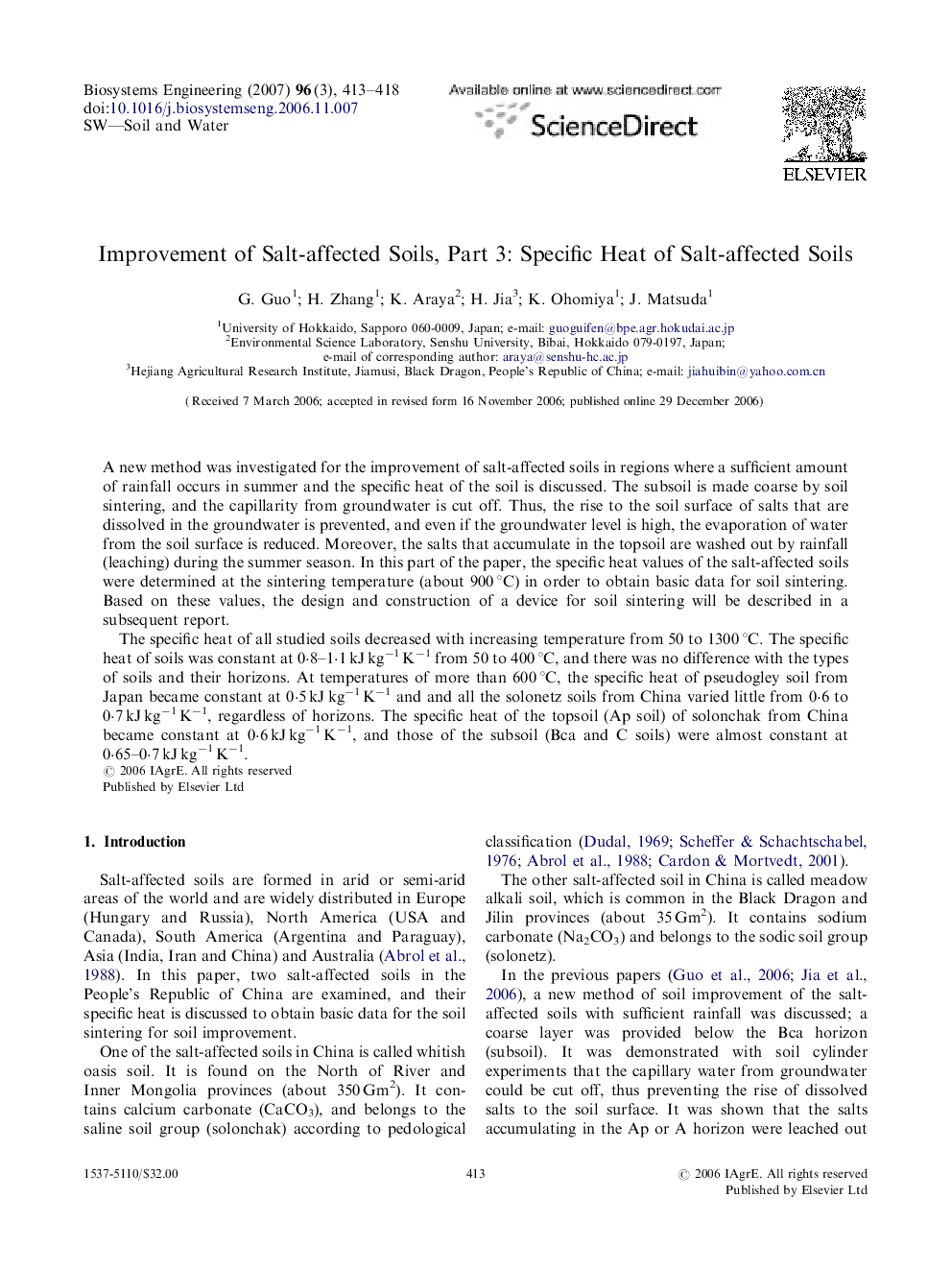| کد مقاله | کد نشریه | سال انتشار | مقاله انگلیسی | نسخه تمام متن |
|---|---|---|---|---|
| 1712450 | 1013139 | 2007 | 6 صفحه PDF | دانلود رایگان |

A new method was investigated for the improvement of salt-affected soils in regions where a sufficient amount of rainfall occurs in summer and the specific heat of the soil is discussed. The subsoil is made coarse by soil sintering, and the capillarity from groundwater is cut off. Thus, the rise to the soil surface of salts that are dissolved in the groundwater is prevented, and even if the groundwater level is high, the evaporation of water from the soil surface is reduced. Moreover, the salts that accumulate in the topsoil are washed out by rainfall (leaching) during the summer season. In this part of the paper, the specific heat values of the salt-affected soils were determined at the sintering temperature (about 900 °C) in order to obtain basic data for soil sintering. Based on these values, the design and construction of a device for soil sintering will be described in a subsequent report.The specific heat of all studied soils decreased with increasing temperature from 50 to 1300 °C. The specific heat of soils was constant at 0·8–1·1 kJ kg−1 K−1 from 50 to 400 °C, and there was no difference with the types of soils and their horizons. At temperatures of more than 600 °C, the specific heat of pseudogley soil from Japan became constant at 0·5 kJ kg−1 K−1 and and all the solonetz soils from China varied little from 0·6 to 0·7 kJ kg−1 K−1, regardless of horizons. The specific heat of the topsoil (Ap soil) of solonchak from China became constant at 0·6 kJ kg−1 K−1, and those of the subsoil (Bca and C soils) were almost constant at 0·65–0·7 kJ kg−1 K−1.
Journal: Biosystems Engineering - Volume 96, Issue 3, March 2007, Pages 413–418